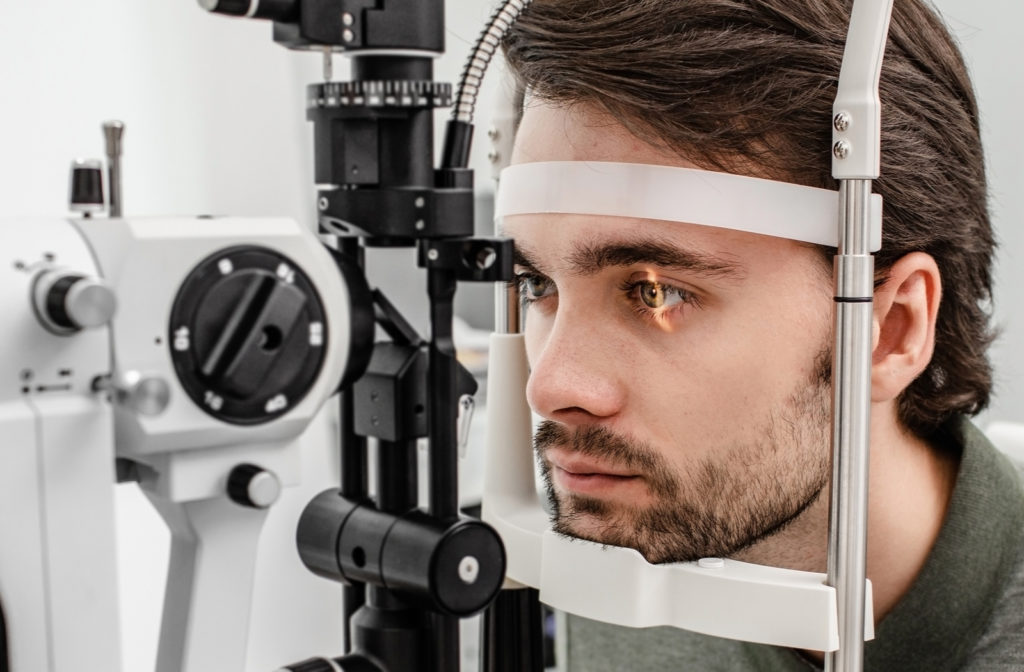Affordable and Caring Optometrist Riverside for All Ages
Affordable and Caring Optometrist Riverside for All Ages
Blog Article
The Comprehensive Eye Exam: What to Anticipate During Your Visit to the Eye Physician
A visit to the eye physician for an extensive eye test is even more than a regular examination; it is a crucial step in securing your visual health and wellness. From the preliminary discussion of your clinical history to the precision of the visual acuity test, each component of the test offers a particular objective. However exactly what happens during the eye health and wellness assessment, and how does it influence the prescription procedure? Understanding these elements is vital for those who wish to keep optimum sight. As we check out each component, the importance of follow-up referrals will also become clear.
First Examination
The initial appointment during an eye exam functions as an essential foundation for recognizing a person's visual wellness requirements. This stage establishes the tone for the whole exam procedure, permitting the eye doctor to collect necessary information about the patient's case history, way of living, and specific vision problems. By carefully assessing any pre-existing conditions, medications, or previous surgical procedures, the eye care professional can tailor the exam to address private needs successfully.

Additionally, the initial examination is a possibility for people to voice any kind of issues or questions, promoting a joint relationship with their doctor. This interaction not only guarantees that the client feels notified and comfy yet likewise equips them to participate actively in their eye health management. Jointly, these discussions allow the optometrist to devise a personalized evaluation plan, ensuring optimum care and precise medical diagnosis.
Visual Acuity Test
Beginning the core parts of an eye assessment, the aesthetic skill test is made to examine the sharpness and clearness of a patient's vision. This crucial evaluation assists establish exactly how well a person can determine letters or symbols at a standardized range, typically using a Snellen graph (Eye Doctor). The graph consists of rows of letters that decrease in dimension from top to bottom, with the individual positioned at a normal range of 20 feet
During the test, the individual is asked to cover one eye and check out out loud the tiniest line of letters they can see plainly. This procedure is duplicated for the various other eye. The outcomes are taped as a portion, with 20/20 vision showing normal visual acuity-- where the client can see at 20 feet what a person with normal vision can see at that range.
The visual acuity examination also identifies possible refractive errors such as nearsightedness, hyperopia, or astigmatism, which may necessitate corrective lenses. By establishing a standard of aesthetic efficiency, the test is a crucial analysis tool that aids the eye care specialist in developing a suitable therapy strategy tailored to the client's one-of-a-kind visual look at here needs.
Eye Wellness Analysis
Following the aesthetic skill test, an extensive eye health and wellness evaluation is conducted to ensure the general health of the eyes. This critical sector of the eye examination involves a complete analysis of both the inner and external frameworks of the eye.
Next, focus shifts to the internal structures. Through using ophthalmoscopy or fundus digital photography, the retina, optic nerve, and blood vessels are thoroughly assessed. This action is vital for determining conditions such as retinal detachment, glaucoma, or diabetic retinopathy. In a lot of cases, pupil extension is carried out to boost exposure of the internal eye structures, although this might result in momentary light sensitivity for the patient.
In addition, intraocular stress is gauged to screen for glaucoma threat. This is typically done using tonometry, which can find elevated pressure levels that might suggest possible damages to the optic nerve. Collectively, these evaluations form a thorough analysis to preserve ocular health and wellness.
Refraction and Prescription
Refraction is an innovative treatment performed by eye care specialists to determine the accurate lens power required to correct refractive mistakes such as nearsightedness, hyperopia, presbyopia, and astigmatism. The objective of this procedure is to examine just how light bends as it passes read here with the eye, allowing the specialist to determine whether corrective lenses are necessary for enhanced visual skill.
During the refraction procedure, the individual is asked to browse a phoropter, a gadget that includes numerous lenses. The expert will systematically change these lenses and ask the patient to contrast quality between choices up until the most effective feasible vision is accomplished. This treatment is crucial in crafting an accurate prescription that defines the suitable lens power for eyeglasses or get in touch with lenses.
The prescription originated from this procedure not just optimizes vision however additionally offers as a foundation for choosing ideal restorative eyewear. It is vital to make sure that prescriptions are routinely upgraded, as adjustments in vision can happen gradually, stressing the significance of routine eye assessments. This careful attention to detail aids maintain clear, comfy vision in life.
Follow-Up Recommendations

Throughout a follow-up check out, the eye medical professional will certainly carry out a series of examinations to assess visual acuity and look for any type of changes in vision that may necessitate an update to the prescription. Additionally, the follow-up offers an opportunity to talk about any pain or problems experienced with current eyeglasses. Adjustments can be made to make certain convenience and efficacy, whether through lens modification or framework adjustments.
For patients with recurring conditions such as glaucoma, diabetes-related eye concerns, or macular degeneration, even more regular follow-ups might be needed. These visits are vital for handling and possibly slowing the progression of eye condition. Complying with these referrals can considerably contribute to maintaining visual health and wellness and avoiding lasting complications.
Conclusion
The thorough eye examination is a necessary procedure for keeping aesthetic wellness, including a thorough analysis of clinical background and vision problems. Trick components include the visual skill test, which examines vision clearness, and the eye health and wellness assessment, which examines the overall condition of the eyes.
A visit to the eye physician for a detailed eye exam is more than a regular examination; it is an essential step in safeguarding your visual health.Kicking off the core components of an eye assessment, the aesthetic acuity examination is designed to analyze the sharpness and quality of a person's vision.Complying with the visual acuity examination, a detailed eye health and wellness assessment is performed to ensure the overall well-being of the eyes. These visits allow the eye care professional to keep an eye on adjustments in vision, update prescriptions, and evaluate the general health and wellness of the eyes. Key components include the visual acuity examination, which examines vision clarity, and the eye health evaluation, which analyzes the general condition of the eyes.
Report this page